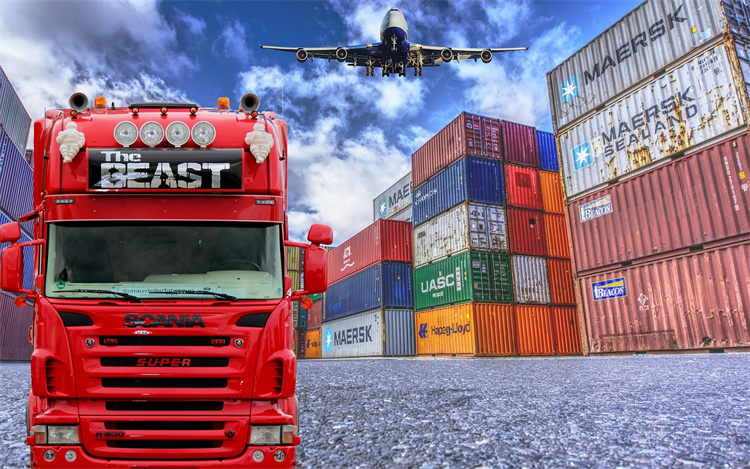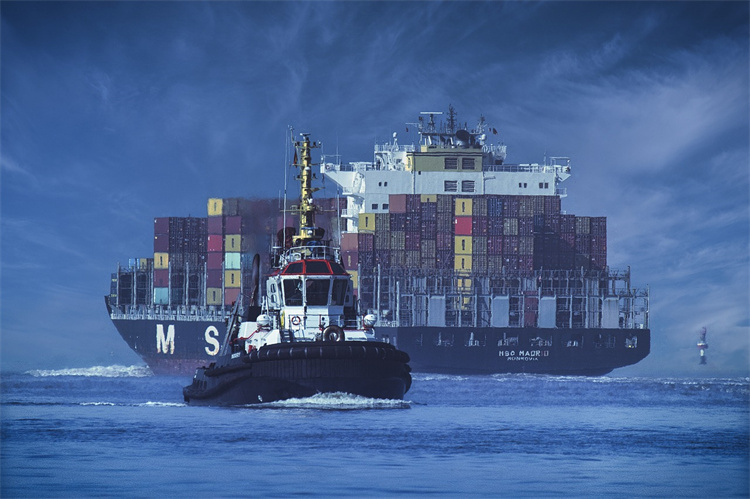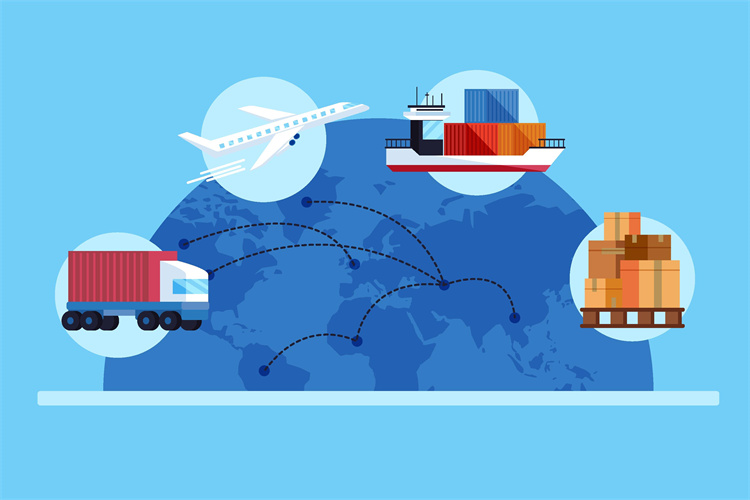Smart Approaches to Multimodal Transportation Optimization in 2025

Multimodal transportation plays a pivotal role in global logistics, enabling seamless coordination between air, land, sea, and rail transport. This integration boosts operational efficiency by leveraging the speed of air freight, the capacity of maritime shipping, and the flexibility of road and rail networks. Global supply chains have faced a 183% surge in volatility since 2019, causing $1.6 trillion in unrealized revenue opportunities annually. Optimizing the current state multimodal-transport can reduce operating costs by up to 30%, making it a cornerstone for resilient and cost-effective logistics in 2025.
Key Takeaways
Multimodal transportation uses air, land, sea, and rail together. This makes shipping faster and can cut costs by 30%.
Using tools like AI and IoT helps track shipments live. It also finds better delivery routes, saving time and money.
Working closely with carriers and suppliers builds trust. This teamwork brings new ideas and lowers costs.
Choosing eco-friendly transport and green practices reduces pollution. It also helps companies follow environmental rules.
Using robots and digital tools makes work easier and clearer. This helps businesses grow and stay ready for the future.
The Current State of Multimodal-Transport
Key Challenges in Multimodal Logistics
The current state multimodal-transport faces significant hurdles that hinder its efficiency and scalability. One of the primary challenges lies in the lack of seamless integration between different transport modes. Disparate systems and technologies often result in delays, miscommunication, and increased operational costs. Additionally, infrastructure limitations, such as congested ports and inadequate rail networks, exacerbate these inefficiencies.
Global supply chains also contend with regulatory inconsistencies across regions. Varying customs policies and documentation requirements create bottlenecks, particularly in cross-border logistics. Furthermore, the rising demand for faster deliveries has placed immense pressure on multimodal systems to adapt without compromising cost-effectiveness.
Another pressing issue is the environmental impact of multimodal logistics. Heavy reliance on fossil fuels and inefficient routing contribute to higher carbon emissions. As sustainability becomes a priority, the industry must address these challenges to remain competitive.
Opportunities for Improvement in 2025
Despite these challenges, the current state multimodal-transport presents numerous opportunities for improvement in 2025. The market size for multimodal logistics is projected to grow from $0.81 billion in 2025 to $1.27 billion by 2033, with a compound annual growth rate (CAGR) of 5.5%.
Technological advancements offer transformative potential. Digital integration across transport modes enhances flexibility and adaptability, while data analytics optimizes delivery routes and reduces costs. Big data also enables better demand forecasting and inventory management, ensuring smoother operations.
Infrastructure investments, such as expanded ports and upgraded rail networks, further support multimodal growth. Additionally, the shift toward environmentally friendly practices, including low-emission vehicles and optimized routing, aligns with global sustainability goals.
The increasing globalization of trade underscores the need for connected logistics systems. By leveraging these opportunities, the multimodal industry can achieve significant improvement in efficiency, cost savings, and environmental impact.
Benefits of Optimizing Multimodal Transportation
Cost Savings and Operational Efficiency
Optimizing multimodal transportation delivers significant cost savings and operational efficiency. By integrating various transportation modes, businesses can reduce handling times and streamline logistics operations. For instance, intermodal transportation minimizes transit times by combining the strengths of rail for long-haul routes and trucks for last-mile delivery. This approach balances cost-effectiveness with responsiveness, ensuring timely deliveries.
Sea freight, particularly through containerization, further enhances cost efficiency by reducing per-unit transportation expenses. Companies leveraging multimodal strategies also benefit from improved supply chain coordination, which reduces delays and enhances overall productivity. These efficiencies translate into tangible financial savings, making multimodal logistics operations a cornerstone of modern supply chain management.
Performance Metric | Benefit Description |
|---|---|
Transit Times | Multimodal transport reduces transit times by optimizing routes across different transportation modes. |
Supply Chain Resilience | Diverse transportation options enhance adaptability, allowing for quick rerouting in case of disruptions. |
Reduced Environmental Impact
Optimized multimodal transportation significantly reduces environmental impact by integrating eco-friendly transport methods. Rail and sea freight, for example, emit fewer greenhouse gases compared to road or air transport. These modes contribute to a lower carbon footprint, aligning with global sustainability goals.
Rail freight emits up to 75% less CO2 per ton-mile compared to trucks.
Sea freight, when optimized, offers the lowest emissions per unit transported.
By adopting these environmentally friendly practices, businesses not only comply with stricter environmental regulations but also demonstrate their commitment to sustainability. This shift toward greener logistics operations benefits both the planet and the companies' reputations.
Enhanced Customer Satisfaction
Optimized multimodal transportation enhances customer satisfaction by improving delivery reliability and transparency. Centralized tracking systems provide real-time updates, enabling businesses to offer accurate delivery timelines. This transparency builds trust and strengthens customer relationships.
Enhanced communication reduces delays and ensures timely deliveries.
Proactive issue resolution minimizes disruptions, further boosting customer satisfaction.
Reliable tracking information allows businesses to provide precise updates, which customers value highly.
By managing the entire freight process efficiently, multimodal logistics operations ensure seamless service delivery. This reliability fosters customer loyalty and positions businesses as dependable partners in the supply chain.
Actionable Strategies for Multimodal Optimization
Leveraging Technology Integration (AI, IoT, Blockchain)
Technology integration has become a cornerstone for optimizing multi-modal transportation. Advanced tools such as artificial intelligence (AI), the Internet of Things (IoT), and blockchain are transforming how logistics networks operate. AI integration enables predictive analytics, allowing businesses to anticipate demand fluctuations and optimize load efficiency. For example, Waymo's autonomous vehicles utilize AI to enhance safety and reduce traffic incidents, showcasing the potential of automation in multimodal systems.
IoT plays a critical role in real-time tracking and monitoring. Sensors embedded in vehicles and cargo containers provide continuous updates on location, temperature, and condition. This data ensures better planning and reduces the risk of delays or damage. Blockchain technology further enhances transparency by creating immutable records of transactions and shipments. Maersk's blockchain logistics system exemplifies this, improving efficiency and preventing fraud in shipping operations.
The combination of these technologies fosters seamless communication across transportation modes. Smart traffic management systems, powered by data science, optimize routing and reduce urban congestion. These innovations not only improve operational efficiency but also align with sustainability goals by minimizing fuel consumption and emissions.
Case Study | Technology Used | Key Benefits |
|---|---|---|
Waymo's Autonomous Vehicles | AI | Enhances safety by reducing traffic incidents through automation. |
Maersk's Blockchain Logistics | Blockchain | Improves transparency and efficiency in shipping operations, reducing delays and preventing fraud. |
Smart Traffic Management Systems | Data Science | Optimizes traffic flow, reducing wait times and urban pollution through real-time data analysis. |
Implementing Dynamic Routing and Real-Time Tracking
Dynamic routing and real-time tracking are essential for achieving optimization in multimodal transportation. Dynamic routing uses live traffic data, vehicle GPS, and historical trends to calculate the most efficient paths. This approach reduces transit times and enhances load efficiency. For instance, transportation management systems (TMS) integrated with enterprise resource planning (ERP) analyze data to select cost-effective carriers, improving competitiveness.
Real-time tracking provides visibility across the supply chain. Customers receive accurate delivery timelines, enabling them to prepare for shipments. This transparency builds trust and strengthens relationships. Additionally, dynamic routing adapts to unexpected disruptions, such as road closures or weather conditions, ensuring timely deliveries.
Dynamic route optimization algorithms utilize live traffic data, vehicle GPS, and average travel speeds to calculate accurate ETAs.
A robust TMS integrated with ERP can analyze historical and real-time data to select the most cost-effective carrier for each load.
Dynamic routing enhances delivery processes through real-time data and intelligent algorithms. Key benefits include improved efficiency, cost savings, real-time adaptability, increased accuracy, enhanced customer service, optimal resource utilization, and scalability.
By combining dynamic routing with real-time tracking, businesses can achieve significant cost savings and operational efficiency. These strategies also contribute to sustainability by reducing fuel consumption and emissions.
The Role of Digitalization and Automation in Multimodal Logistics

Streamlining Operations with Digital Platforms
Digital platforms are revolutionizing multimodal logistics by enhancing operational efficiency and transparency. Unified platforms like the Unified Logistics Interface Platform (ULIP) integrate logistics-related data from multiple government systems, enabling seamless coordination across transport modes. Similarly, Digital Freight Matching (DFM) platforms act as real-time marketplaces, connecting shippers and carriers to optimize resource allocation and reduce costs.
These platforms leverage advanced technologies such as artificial intelligence and big data analytics to improve logistics processes. AI-driven solutions optimize route planning and inventory management, ensuring timely deliveries and reducing operational costs. Additionally, IoT-enabled sensors provide real-time updates on cargo conditions, enhancing monitoring and control. By integrating these technologies, businesses can achieve better capacity utilization and improve the overall quality of their supply chain operations.
Smart logistics platforms not only streamline operations but also enhance resilience by reducing transaction costs and improving logistics efficiency.
Scaling Efficiency Through Automation
Automation plays a critical role in scaling efficiency within multimodal logistics. Automated systems in warehousing and sorting reduce labor costs and minimize errors, leading to improved supply chain management. For instance, intelligent algorithms analyze logistics paths to optimize delivery routes, resulting in faster and more reliable shipments.
The integration of automation also enhances flexibility and resilience. Businesses can adapt to supply chain changes more effectively, ensuring consistent service delivery. Automated systems further contribute to cost efficiency by selecting the most financially viable transport methods, reducing fuel and infrastructure expenses. These advancements not only improve delivery times but also lower carbon emissions, aligning with sustainability goals.
Scaling automation in multimodal logistics ensures better financial health and a reduced environmental footprint, fostering long-term business stability.
Environmental Sustainability in Multimodal Transportation

Adopting Low-Emission Transportation Modes
Low-emission transport plays a crucial role in reducing the environmental impact of multimodal logistics. By switching to cleaner fuels, improving fuel efficiency, and adopting sustainable operating practices, businesses can significantly lower greenhouse gas emissions. For example, public buses powered by renewable fuels and electric vehicles demonstrate the effectiveness of fuel switching. Hybrid vehicles and aerodynamic designs further enhance fuel efficiency, while improved voyage planning for ships minimizes unnecessary fuel consumption.
Type | How Emissions Are Reduced | Examples |
|---|---|---|
Fuel Switching | Using fuels that emit less CO2 | Public buses powered by renewable fuels, electric vehicles, hydrogen fuel cell vehicles. |
Improving Fuel Efficiency | Advanced technologies for fuel-efficient vehicles | Hybrid vehicles, lightweight materials, aerodynamic designs. |
Improving Operating Practices | Practices that minimize fuel use | Sensible driving practices, reducing taxi time for aircraft, improved voyage planning for ships. |
Reducing Travel Demand | Urban planning to minimize driving | Public transportation, bike paths, mixed-use zoning. |
Multimodal transportation also optimizes journeys to reduce CO2 emissions. Shared micromobility systems, such as bike-sharing programs, replace vehicle trips and connect users to transit hubs. These systems support the transition from car-centric travel to multimodal approaches, essential for climate action.
Incorporating Circular Economy Practices
Circular economy practices enhance sustainability by reducing waste and promoting resource efficiency. The European Union’s goal to cut net greenhouse gas emissions by 55% by 2030 highlights the importance of these practices in transportation. Reframing sustainability goals to focus on carbon consumption and emissions aligns with circular economy principles, emphasizing the reuse and recycling of materials.
Transportation accounts for approximately 25% of global CO2 emissions, underscoring its significance in sustainability discussions. Circular economy initiatives, such as repurposing shipping containers and optimizing packaging materials, reduce environmental impact while maintaining operational efficiency. These practices not only lower emissions but also foster innovation in logistics systems.
Optimizing multimodal transportation remains vital for addressing global logistics challenges. It reduces costs, enhances efficiency, and minimizes environmental impact. Innovation drives this transformation by integrating AI, IoT, and blockchain into logistics systems. Collaboration among carriers, suppliers, and technology providers strengthens supply chain resilience.
The future of logistics lies in sustainable practices and advanced technologies. Businesses that embrace these changes will lead the way in creating efficient, eco-friendly transportation networks. Multimodal optimization ensures adaptability in a rapidly evolving global trade landscape.
FAQ
What role does prioritizing shipments play in multimodal optimization?
Prioritizing shipments ensures that critical goods reach their destinations on time. It involves analyzing shipment urgency, value, and customer requirements. This practice supports continuous improvement in logistics operations by aligning resources with business priorities, ultimately enhancing customer satisfaction and operational efficiency.
How can businesses achieve continuous improvement in multimodal logistics?
Businesses can achieve continuous improvement by adopting data-driven strategies, investing in advanced logistics management systems, and fostering collaboration with carriers. Regular performance evaluations and the integration of sustainable practices also contribute to refining operations and maintaining competitiveness in the logistics industry.
What are the environmental benefits of multimodal transportation?
Multimodal transportation reduces environmental impact by incorporating low-emission modes like rail and sea freight. Optimized routing and fuel-efficient practices further minimize carbon footprints. These efforts align with global sustainability goals and demonstrate a commitment to eco-friendly transportation services.
See Also
Affordable Transportation Management: Your Budget's Best Companion
A Comprehensive Guide to Eco-Friendly Supply Chain Transportation
Get Prepared: Discovering Cutting-Edge Transport Tech for Supply Chains
Revolutionizing Efficiency with Smart Indigenous Transport Solutions
Five Groundbreaking Techniques for Optimizing Your Supply Chain
